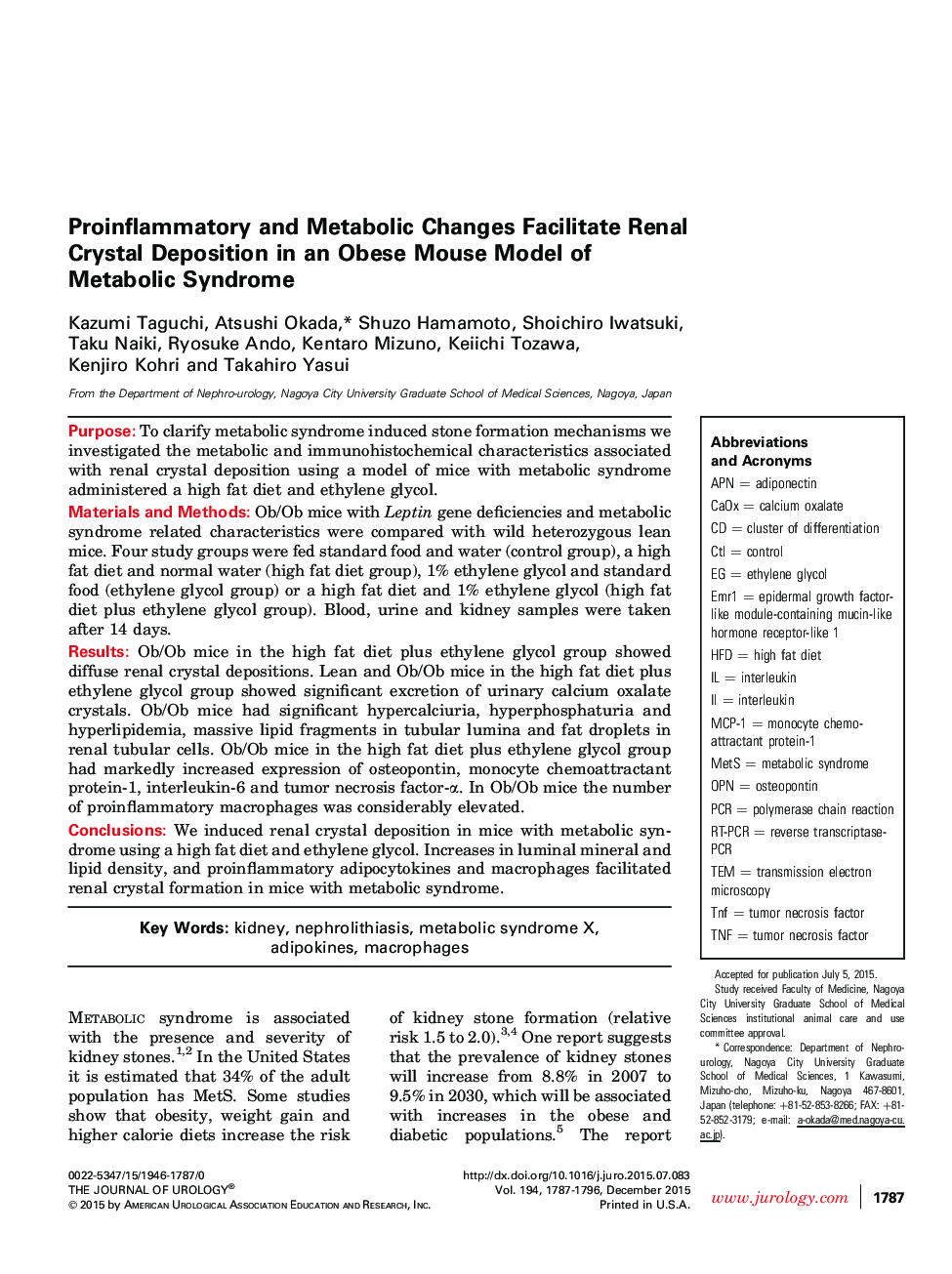| Article ID | Journal | Published Year | Pages | File Type |
|---|---|---|---|---|
| 3860472 | The Journal of Urology | 2015 | 10 Pages |
PurposeTo clarify metabolic syndrome induced stone formation mechanisms we investigated the metabolic and immunohistochemical characteristics associated with renal crystal deposition using a model of mice with metabolic syndrome administered a high fat diet and ethylene glycol.Materials and MethodsOb/Ob mice with Leptin gene deficiencies and metabolic syndrome related characteristics were compared with wild heterozygous lean mice. Four study groups were fed standard food and water (control group), a high fat diet and normal water (high fat diet group), 1% ethylene glycol and standard food (ethylene glycol group) or a high fat diet and 1% ethylene glycol (high fat diet plus ethylene glycol group). Blood, urine and kidney samples were taken after 14 days.ResultsOb/Ob mice in the high fat diet plus ethylene glycol group showed diffuse renal crystal depositions. Lean and Ob/Ob mice in the high fat diet plus ethylene glycol group showed significant excretion of urinary calcium oxalate crystals. Ob/Ob mice had significant hypercalciuria, hyperphosphaturia and hyperlipidemia, massive lipid fragments in tubular lumina and fat droplets in renal tubular cells. Ob/Ob mice in the high fat diet plus ethylene glycol group had markedly increased expression of osteopontin, monocyte chemoattractant protein-1, interleukin-6 and tumor necrosis factor-α. In Ob/Ob mice the number of proinflammatory macrophages was considerably elevated.ConclusionsWe induced renal crystal deposition in mice with metabolic syndrome using a high fat diet and ethylene glycol. Increases in luminal mineral and lipid density, and proinflammatory adipocytokines and macrophages facilitated renal crystal formation in mice with metabolic syndrome.
